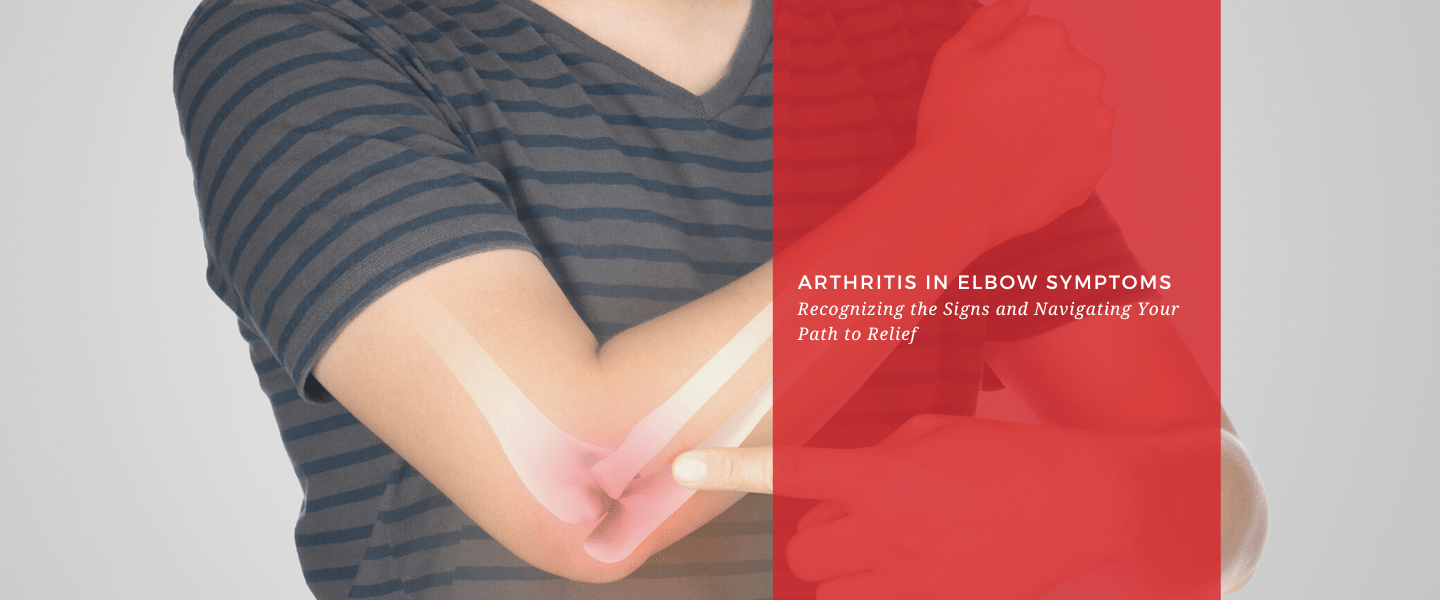With over 1 million orders

Arthritis in Elbow Symptoms: Recognizing the Signs and Navigating Your Path to Relief
Read more about the subtle yet crucial signs of elbow arthritis and learn how to proactively manage this often-overlooked condition. Explore the symptoms, early detection, and effective relief strategies to regain control of your life despite arthritis's challenges.
Elbow arthritis may not be as commonly discussed as its counterparts in the knees or hips, but it's no less debilitating. The elbow, a critical hinge joint, facilitates many of our daily tasks. Hence, arthritis in this region can severely hamper one's quality of life. Recognizing the early signs is the first step toward seeking effective relief.
Understanding Elbow Arthritis
Before we delve into the symptoms, it's essential to understand what arthritis in the elbow entails. The condition occurs when the cartilage surface of the elbow becomes worn out or damaged. As cartilage degenerates, bones may rub against each other, causing pain and reduced mobility.

There are primarily three types of elbow arthritis:
- Osteoarthritis: Resulting from wear and tear over time.
- Rheumatoid Arthritis: An autoimmune condition where the body's immune system attacks the joint.
- Post-Traumatic Arthritis: Arising from an injury or trauma to the elbow.
Arthritis in Elbow: Recognizing the Symptoms
- Pain: The most telltale sign of elbow arthritis is pain. Initially, you might only feel pain when using the joint, but as the condition progresses, it can become constant. The pain may also intensify after activities involving the elbow.
- Stiffness: You might find it challenging to fully extend or bend your arm, especially after periods of inactivity like waking up in the morning.
- Swelling: As with other forms of arthritis, inflammation can lead to swelling in and around the elbow joint.
- Locking or Catching Sensation: This occurs when rough cartilage or bone spurs interfere with the smooth movement of the joint.
- Decreased Range of Motion: Over time, you may notice a gradual reduction in the movement of your elbow, making tasks like lifting objects or even waving more difficult.
- Grinding Sensation: If you feel or even hear a grinding sound in your elbow when moving, it's a sign of cartilage degradation.
Navigating the Path to Relief

Once you've identified the symptoms, the next step is seeking relief. Here's a roadmap to guide you:
- Consultation: The moment you notice persistent signs of elbow arthritis, consult with a healthcare professional. They will provide a definitive diagnosis and guide you on the best course of action.
- Physical Therapy: Strengthening the muscles around your elbow can reduce stress on the joint. A physical therapist can guide you through exercises that target these muscles, providing pain relief and improving flexibility.
- Medication: Over-the-counter pain relievers can help manage pain. In more severe cases, your doctor might prescribe stronger painkillers or even recommend injections to reduce inflammation.
- Bracing: Wearing an elbow brace or sleeve provides additional support to the joint, limiting pain-inducing movements. It's a non-invasive way to alleviate symptoms and is particularly helpful during physical activities.
- Lifestyle Adjustments: Sometimes, small changes can have significant impacts. For instance, using ergonomic tools, taking regular breaks during repetitive tasks, or even learning new ways to lift objects can go a long way in reducing strain on your elbow.
- Surgical Interventions: In extreme cases where conservative treatments don't provide relief, surgical options might be considered. These range from arthroscopy to clear out damaged tissue, to joint replacement for severe osteoarthritis.
Recognizing the signs of elbow arthritis early can make the journey to relief shorter and more effective. Armed with knowledge and an understanding of available treatment options, you can proactively manage your symptoms and maintain a more active, pain-free life.
To learn more about elbow arthritis, check out related articles below:
Elbow Arthritis: Understanding its Causes, Symptoms, and Modern-Day Management Techniques
Rheumatoid Arthritis Elbow: A Deep Dive into RA's Impact on the Elbow
Top Picks: Finding the Best Elbow Brace for Arthritis Relief
